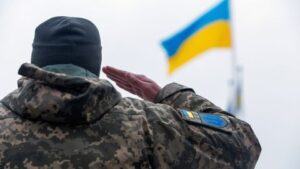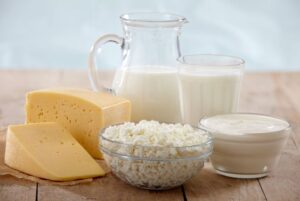
The military proposes to introduce progressive annual remuneration for each full year of service and to establish the “Cross of the Long Guard” award. A corresponding petition on behalf of his comrades was registered by volunteer Senior Lieutenant Andriy Dmytrenko.
The petition proposes establishing an annual monetary reward for each full year of service during the war, which would double annually. Thus, for the first year of service, the reward could be 50,000 hryvnia, for the second – 100,000 hryvnia, for the third – 200,000 hryvnia, and for the fourth – 200,000 hryvnia.
The authors of the petition propose to establish payment for the actual period of service in wartime conditions, with those who have been demobilized also receiving payment for the years they have served.
At the same time, periods of unauthorized absence from the unit and other exceptions reset the term, and the calculation of remuneration begins from the moment of return to service.
In addition, the authors of the petition are initiating the introduction of a state combat award, the “Cross of Dovgoi Varti,” which is awarded after the first full year of service in wartime conditions and is supplemented with new elements for each subsequent year of service, becoming a visible symbol of long-term service, endurance, honor, and loyalty.
“This is not just another ribbon to wear on your uniform. It is a testament to a path that is invisible to the civilian eye. It is a new military tradition that the country must establish now,” the petition’s authors note.
The petition has now gathered more than 20,000 signatures.
The petition is available at https://petition.kmu.gov.ua/petitions/8625.

Insurance premiums accrued under international Green Card insurance agreements concluded by member companies of the Motor (Transport) Insurance Bureau of Ukraine (MTIBU) decreased by 3.9% in January-December 2025 compared to the same period in 2024, to UAH 5.042 billion.
According to the MTIBU website, the number of Green Card contracts concluded during this period decreased by 4.3% to 1.308 million.
At the same time, the amount of compensation paid on claims increased by 0.75% to EUR 46.125 million, while the number of claims paid decreased by 8.52% to 13,300.
The MTIBU is the only association of insurers providing compulsory civil liability insurance for owners of land vehicles for damage caused to third parties.
The Green Card is a system of insurance protection for victims of road traffic accidents, regardless of their country of residence and the country of registration of the vehicle. It covers 45 countries in Europe, Asia, and Africa.
According to a decision adopted by the General Assembly of the Council of the International Motor Insurance System “Green Card” in Luxembourg in May 2004, Ukraine has been a full member of this system since January 1, 2005.

The dairy industry, which is one of the key sectors of Ukraine’s agricultural sector, has retained its production base and is gradually recovering despite the full-scale war, Deputy Minister of Economy, Environment, and Agriculture Taras Vysotsky said at the XVII All-Ukrainian Conference “Dairy Business-2025” in Kyiv on Thursday.
The deputy minister noted that in January-October 2025, Ukraine produced almost 5.9 million tons of milk.
“An important trend is the growing role of agricultural enterprises: they already account for 45% of production, and their production volumes have increased by 7.6%, despite the overall reduction in livestock numbers. Quality is also improving: more than 55% of milk sent for processing meets the European ‘extra’ standard,” he wrote on Facebook.
Vysotsky emphasized that the industry is also actively working in foreign markets. In the first 10 months of 2025, exports of dairy products grew by almost 9%. Sixty-four Ukrainian companies have permission to export dairy products to the EU, 40 of which are milk processing plants.
“Despite the challenges, we are maintaining the stability of current indicators and forming a resource for further growth – this is our realistic and strategic focus. The next step is investment, modernization, and a clear move towards integration with the European market,” the deputy minister concluded.

According to Serbian Economist, Budapest, Hungary, ranked first in Radical Storage’s list of the world’s dirtiest cities, compiled based on an analysis of tourist reviews of the cleanliness of popular attractions in 100 major tourist destinations.
According to the study, 37.9% of reviews mentioning cleanliness in Budapest were negative, which was the worst result among all cities surveyed. Rome (35.7% negative reviews), Las Vegas (31.6%), Florence (29.6%), and Paris (28.2%) followed.
The top 20 cities perceived as the dirtiest by tourists also included Milan, Verona, Frankfurt, Brussels, Cairo, Heraklion, New York, Barcelona, Johor Bahru, Seville, San Francisco, Miami, Hyderabad, London, and Osaka. In all these cities, the share of negative reviews about cleanliness ranges from 15.6% to 26.8%.
The authors of the study note that the most criticism for cleanliness is received by mass tourist centers with historic centers and high loads on urban infrastructure. In the case of Budapest, one possible reason is that the waste management system has not been able to keep up with the growth in tourist traffic, which, according to Etias, increased by 8.3% in Hungary in September 2025 and by 12% in the capital itself compared to the same month in 2024.
Radical Storage emphasizes that the rating reflects not objective sanitary indicators, but rather the subjective perception of cleanliness by tourists, as recorded in English-language Google reviews of key attractions in the 100 leading cities in the world according to the Euromonitor index.

Ukrainian bakery chain Lviv Croissants has launched its second location in Washington State, US, the company announced on Instagram.
The new location is in Westfield Southcenter Mall, one of the largest shopping centers in the region and a key traffic hub. The space was prepared for opening for about a year.
“A lot of teamwork went into this opening. We prepared the space for almost a year — carefully, responsibly, and without rushing. And now we can say: it was worth it. We brought to Tacoma what we love most: Lviv hospitality and flavors that are easy to fall in love with,” the company said, adding that the Ukrainian atmosphere of Lviv Croissants is now even closer to Seattle.
The assortment includes traditional croissants with various fillings, as well as beverages to make snacks for an active day convenient and delicious.
As reported, the chain entered the Norwegian market in November.
According to the company’s website, the brand entered the European market in September 2022. Currently, there are 178 establishments throughout Ukraine, 11 in Poland, and one each in Slovakia and the Czech Republic.
In April 2025, the Lviv Croissants chain opened its first outlet in South Korea. Korean franchisees invested about $250,000 in the bakery, and the total investment in the opening was about $500,000.

The Export Credit Agency (ECA) has received a certificate of compliance with the international standard ISO 37001:2016 — the Anti-Bribery Management System standard, according to the ECA website.
In addition, it is noted that ISO 37001:2016 is a globally recognized standard that defines the requirements for the development and operation of systemic mechanisms for preventing, detecting, and responding to bribery risks. It applies to organizations of any form of ownership and scale and covers both internal processes and interactions with contractors, partners, and intermediaries.
ISO 37001:2016 certification confirms that EKA has implemented and is effectively operating an anti-bribery management system that meets international requirements and has been independently assessed by an external certification body. The audit covered not only the existence of policies and procedures, but also their implementation, internal control, accountability, and response mechanisms.
“For international partners, financial institutions, and businesses, ISO 37001:2016 certification confirms that ECA’s activities are based on the principles of integrity, transparency, and good governance, and that its internal processes are designed in line with the best global practices in anti-corruption compliance,” the statement said.
The Export Credit Agency of Ukraine (ECA) is a state institution that supports non-commodity exports by insuring the risks of enterprises and banks. The agency insures foreign economic contracts, export credits, bank guarantees, and investment loans against military risks.